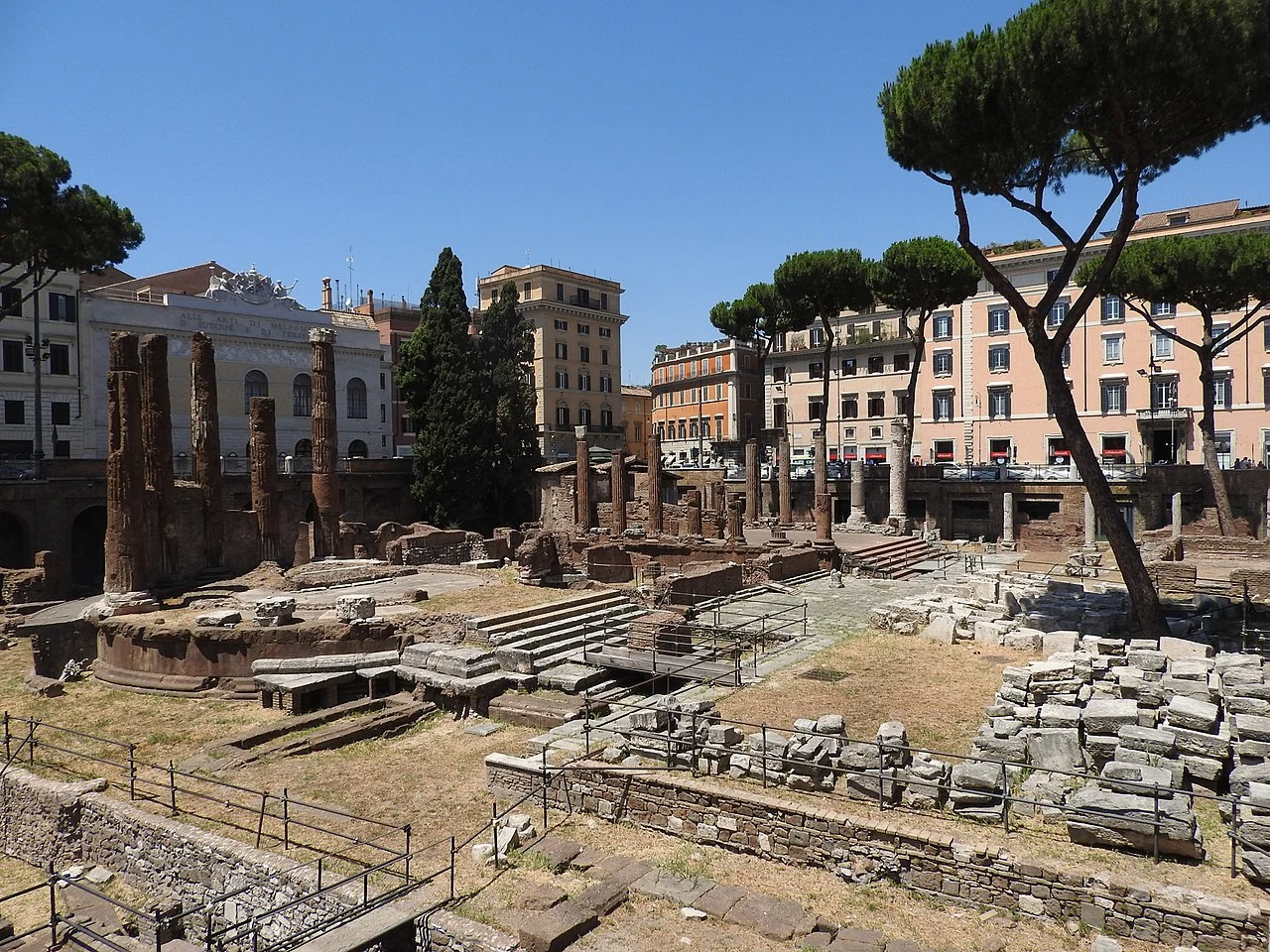
Courtesy Wikimedia Commons
An ancient Roman building complex that’s believed to be the site where Julius Caesar was stabbed to death is now open to the public.
Comprised of four temples dating as far back as the 3rd century BCE, the complex is currently situated along the bustling Argentina Square plaza. Until now, visitors had to look down several meters above the site from the sidewalk.
Since the time of the Roman Empire, the city was built up over the ruins. As part of dictator Benito Mussolini’s urban landscape campaign in the late 1920s, the Medieval-era buildings that stood on top of the complex were demolished.
The four temples, which have been taken over by cats in recent years, are believed to have been dedicated to female deities. One such temple, thought to be devoted to the goddess Fortuna, who is associated with chance and fertility, is circular, with six surviving columns. It can be accessed via a staircase.
Behind two of the temples, archaeologists uncovered a foundation and a section of a wall that they believe were once part of the Curia Pompeia, a sizable rectangular hall that temporarily housed the Roman Senate when Caesar was murdered for his political strategies in 44 BCE. Archaeologists believe this site is the Curia Pompeia because of the latrines found along the sides of the structure. Ancient writings described those latrines.
The travertine pavers that Emperor Domitian had placed following a fire that ravaged the city in 80 CE, including the sacred area where Caesar was killed, can also be seen.
Some of the artifacts unearthed over the last century of excavations are on display, including a massive stone deity head missing a chin and lower lip, as well as a fragment of a stone Winged Victory. That deity would have been venerated inside the temples.
The luxury jewelry company Bulgari helped fund the construction of the new walkways and evening lights.
Those wishing to see the iconic site can visit every day except Mondays and some major holidays. Tickets for general admission cost €5 ($5.50).


